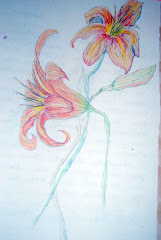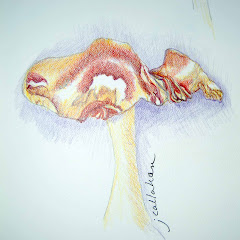





Well, I haven’t been posting much this winter because I didn’t get out enough to take new pictures, or have new adventures to write about. But, despite today’s snow, the days are getting longer, the birds have been singing their little hearts out, the temperatures, generally, are milder, and the promise of spring is evident everywhere! That puts me in mind of some of the wonderful plants that my friend Mira Nussbaum, a nature lover/herbalist (also a fabulous silk painter http://www.silkstories.net/) has taught me about, that will soon be peeking their heads above the soil.
Mira and I have been working together on a book on wild plants; plants that have both nutritional and medicinal value, for about five years now. As I was unfamiliar with many of these plants when we first began the book (I signed on as illustrator/photographer) I have learned a tremendous amount about the unbelievable storehouse of nutrients and medicinal constituents that these plants have to offer, and that have gone largely ignored for many years. A vast collection of wisdom has been lost in regard to wild food and medicine in our culture, but I believe we are seeing a resurgence of interest in the topic, and that brings me great joy. I would love to see this wisdom reclaimed in our culture. As a result of this study, it has become a passion of mine to both learn as much as I can about the subject, and to share this information with others.
One of the plants to come up in the early spring is nettle (Urtica dioica). While most of us know this plant to be the one we want to avoid at all costs: it has tiny hairs that cause stinging and temporary inflammation when brushed up against. (Who amongst us has not inadvertently moved through a stand of nettle only to be quite regretful of the mishap?) But what I never knew was this humble little plant (well, not so little; it grows 2-4 ft high) is one of the most nutritious plants to be found in the wild. It is 10% protein, higher than any other vegetable; it is also a treasure trove of minerals: it is rich in calcium magnesium, iron, manganese, sodium, sulphur, potassium, silicone, iodine, and silica. It is also rich in Vitamins C, Vitamin B complex: thiamine, riboflavin, niacin, Vitamin A, and beta-carotene. Also, it is high in chlorophyll, tannins, and in amino acids!
Not only is it a nutritional powerhouse, but it seems, a pharmaceutical one, as well. The leaves of the plant are commonly used as treatment for allergies, in particular, hay fever; it is used to staunch bleeding, such as nosebleeds, blood in the urine, and uterine bleeding, also. Compresses are made of nettle tea for burns, wounds, stings, and cuts. It acts as a safe diuretic, and is used for kidney and bladder imbalances. In addition, it is widely used for eczema, and is said to be an excellent cleansing anti-septic, leaving your skin clear and healthy. Steve Brill, in Identifying and Harvesting Edible and Medicinal Plants, also says that it makes hair shinier, and thicker.
Nettle tincture is also known to work as an expectorant, and is a common remedy for colds, flu and other respiratory ailments. The roots are used as a treatment for prostate enlargement, and, according to eclecticphysician.com, the roots inhibit “binding of sex hormone globulin to prostatic tissue receptors”, also, it “inhibits prostate cell metabolism and growth.” The root is also thought to inhibit viral activity.
These medicinal benefits are due to the presence of many constituents: in the fresh plant stingers: Acetylcholine, Histamine, Serotonin, and Formic Acid; in the leaves: volatile oils including ketones, silicic acid, potassium ions, and flavinoids. The root contains Sterols: B-Sitosterol, Stigmasterol, and Campesterol. It also contains Lectins, Polysaccharides (with “immune stimulating effects”) and Hydroxycoumarins, Ceramides and Lignans.
“So what,” you may say, “how am I supposed to capture these benefits if the plant is armed and dangerous?” But it is easier than you may think: the novice should wear gloves while harvesting, and while carefully holding the lower leaves (not the stem where the stingers reside) one may snip off the tender leaves at the top of the plant; I like to use scissors, it makes the job quicker. These tender, upper leaves should be taken before the plant flowers (it has small, green flowers that grow in trailing clusters; they grow in the axils between paired, serrated leaves) ideally the plant should be no higher than 1 ft. when they are taken. Once a supply of nettle is found, the harvester can re-visit the stand frequently, topping off the same plants, delaying the onset of flowering. However, it’s important to be mindful of where the nettle is standing; if it is anywhere near a field, or roadside, that is sprayed with pesticides, then find another source.
The fresh leaves can be steamed, used in soups, or made into tea; and, they can be dried to be used at a later date. And what of the stingers you may ask? They are rendered undetectable once cooked, and as you are only harvesting the upper part of the plant, the stingers are much smaller and less bothersome. I have often used nettle in quiche, or anywhere a recipe calls for gently cooked greens.
One of my favorite books, Encyclopedia of Herbal Medicine, by Andrew Chevallier, shows in clear, simple steps how to prepare tinctures, extracts, infusions, lotions and creams of wild herbs; I’ve found it invaluable.
Of all the wild plants, this is surely one that has the most to offer, and it is ours for the taking. It is so beneficial, that the wise gardeners would set aside a place to have their own stand of this highly valuable plant!
Sources:
Identifying and Harvesting Edible and Medicinal Plants, by Steve Brill, Illustrated by Evelyn Dean
New Menopausal Years The Wise Woman Way, by Susun Weed
Encyclopedia of Herbal Medicine, by Andrew Chevallier
Eclecticphysician.com






















